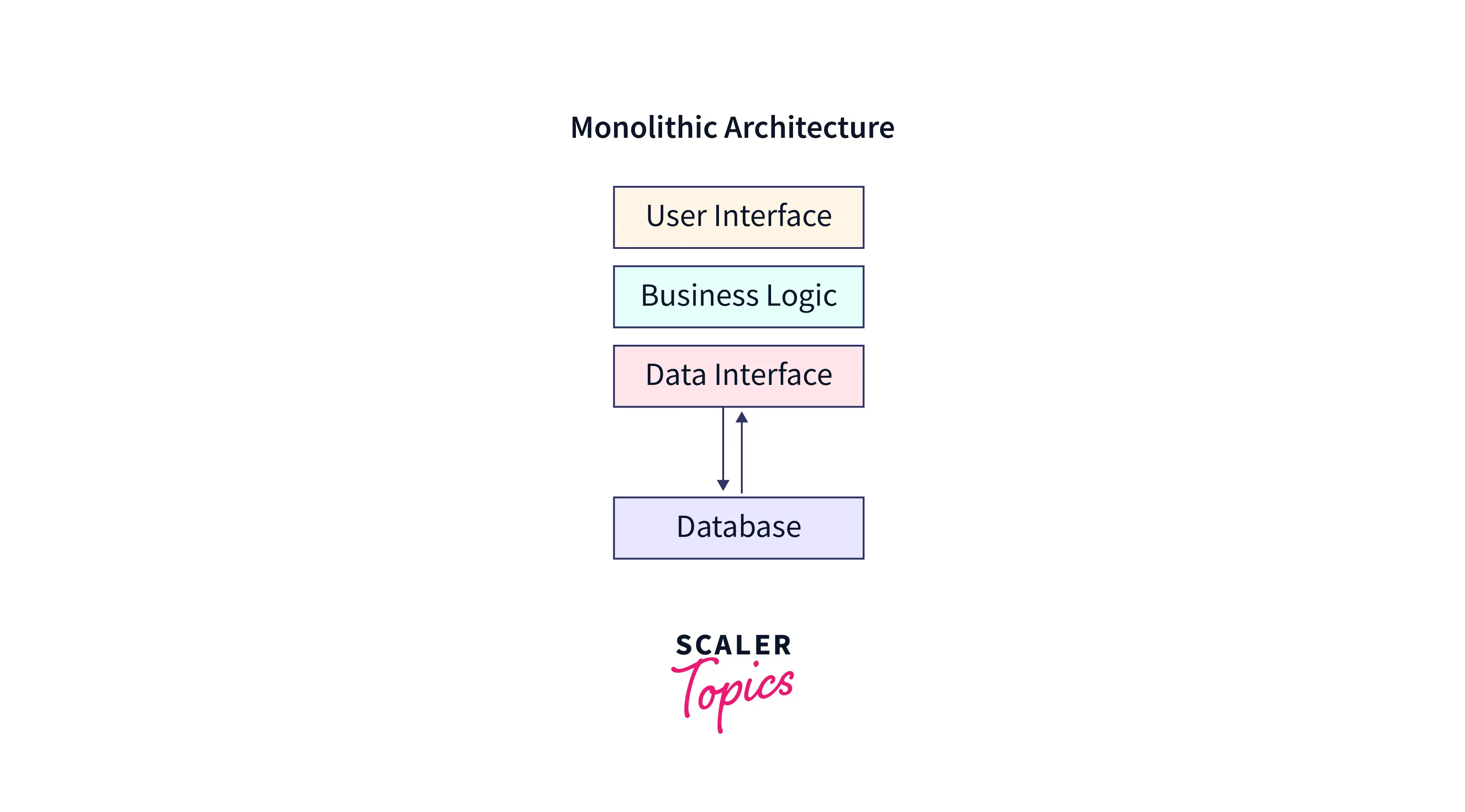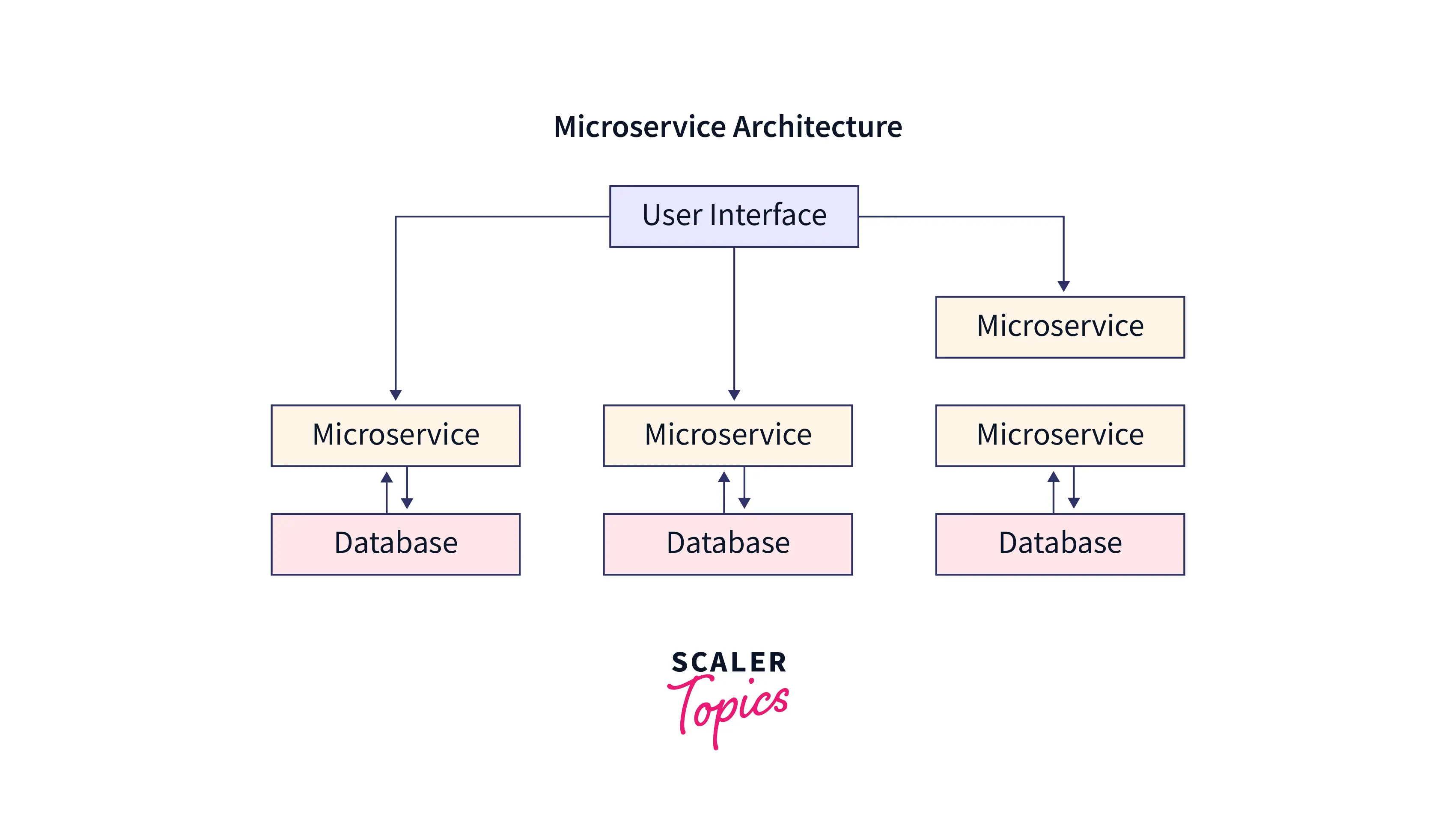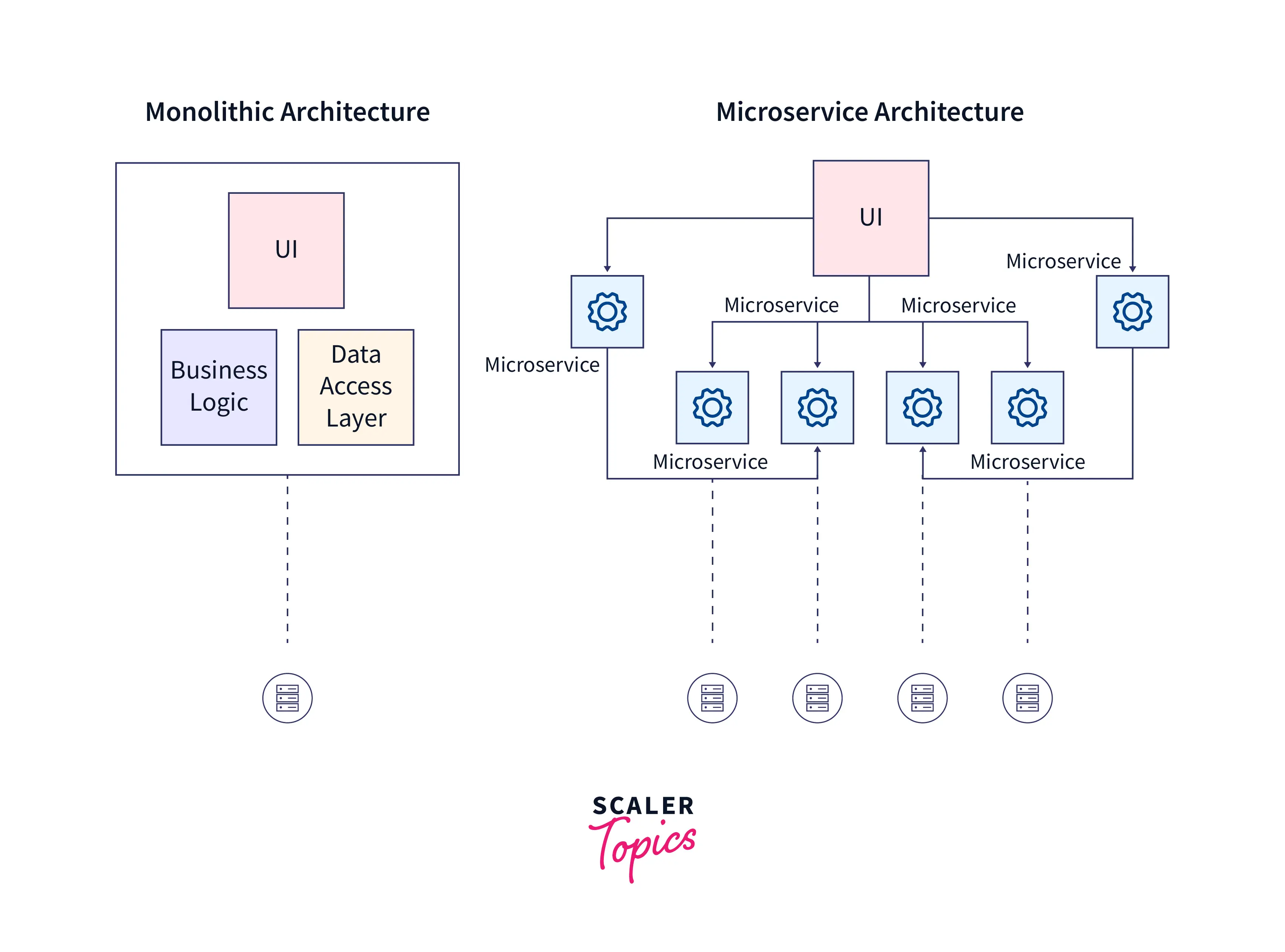Monolithic Vs Microservices Architecture
Overview
Monolithic architecture is created as a single massive system with a single code base. On the other hand, Microservices architecture is designed as a collection of small, self-contained modules based on business functionalities.
Though each of these approaches can result in robust programs that serve several functions, the backbone of the application will differ significantly depending on whether you choose the monolith or microservices route. Furthermore, changing the underlying architecture can be tedious and time-consuming once an application is established. Therefore, people developing new applications should consider numerous things while getting started to prevent costly mistakes. We'll go through the fundamental distinctions between monolithic and microservices-based apps, the use cases, and what you should think about when picking between the two approaches.
What is Monolithic Architecture?

A monolithic application, sometimes known as a "monolith," is made up of a single massive codebase that contains all of the program's components, such as the backend, frontend, and configuration. Monoliths are usually seen as an older and more conventional method of designing applications, although many businesses still need to start using monolithic architecture. Monolithic programs are typically faster to create and deploy than applications based on microservices architecture, and they may be simpler to manage. On the other hand, Monolithic programs might suffer from a lack of scalability and the limitations of maintaining a single gigantic codebase as the program expands in size.
What is Microservices Architecture?

Microservices architecture separates all system components into individual chunks that may be built, implemented, and scaled independently. Microservices, also known as microservice architecture , is a design strategy that constructs an application as a collection of tiny independent services based on a business domain. In a Microservice Architecture, each service is self-contained and delivers a single business feature. Microservices have become the go-to technique for developing applications in today's industry.
Key Difference Between Monolithic Vs Microservices Architecture
The main difference between Monolithic and Microservices Architecture is in their structural approach to application development. In Monolithic Architecture, the entire application is built as a single, tightly integrated unit, making it simpler to develop and initially deploy. However, it can become complex to maintain and scale as the application grows. On the other hand, Microservices Architecture divides the application into small, independent modules that can be developed, deployed, and scaled individually. This approach offers greater flexibility and adaptability but requires specialized skills and careful consideration of communication and coordination between modules. The choice between these architectures fundamentally depends on the specific needs and goals of your project.
Monolithic vs Microservices Architecture

| Parameters | Monolithic | Microservices |
|---|---|---|
| Development Speed | Slower due to the size and complexity. | Faster development of individual modules. |
| Testing | Comprehensive testing is more challenging. | Easier testing of smaller, independent modules. |
| Fault Isolation | A failure in one module can affect the entire system. | Failures are isolated, affecting only specific services. |
| Resource Utilization | Typically utilizes resources less efficiently. | Can allocate resources more optimally for each service. |
| Communication | Internal communication is simpler. | Requires well-defined communication protocols. |
| Dependency Management | Tight coupling can lead to version conflicts. | Easier management of dependencies with containerization. |
| Deployment | Requires the entire application to be deployed at once. | Allows for continuous integration and deployment. |
| Monitoring | Monitoring a single application is simpler. | Requires monitoring of multiple services. |
| Complexity | Easier to understand due to single code base. | More complex due to the distributed nature. |
Let us go through the pros and cons of each one of these two approaches.
Pros of Monolithic Applications
- Easier to develop and deploy: Since all components of a monolith are centralized, they may be relatively straightforward to construct and deploy, resulting in a faster time to reach the market. Using the monolith architecture, even single developers or small teams can quickly design, test, and launch programmes.
- Easier to test: Monoliths are sometimes simpler to test than microservices-based apps since there is only one code source to keep track of while testing and troubleshooting.
- Fewer skills required: Most development teams today are competent in building a monolithic program, but constructing an application based on microservices requires particular skills and training.
- Singular security management: While separating an application into distinct microservices has certain security advantages, utilizing a monolith ensures security is managed in one location rather than monitoring vulnerabilities throughout all microservices.
Cons of Monolithic Applications
- Complex maintenance: As an application grows and adds features, a monolithic codebase may become enormous and complex. This makes the program difficult to maintain, especially as the number of developers working on the single codebase increases.
- Difficulty in implementing changes: Changes to one component of the program may accidentally affect other parts of the codebase, needing greater work to identify problems.
- Difficult to scale: Scaling monolithic applications is difficult because new processing resources must be provided all at once, a technique known as vertical scaling. This may be expensive, and there are always limitations on how much an application can expand vertically.
- Technology constraints: Due to the interwoven dependencies in a monolith, adding or updating functionality may take a lot of work. Depending on the requirements of the application, the developers may be limited in what additional features they can include with a monolithic application.
- Single point of failure: Since all parts of a program are inextricably connected, a problem anywhere in the code may bring the entire application down.
Pros of Microservices Applications:
- Microservices are self-contained: Because microservices are self-contained, they may be debugged, deployed, and maintained separately from other modules. As an application expands, this might be useful since changes in one component do not impact the others. A team devoted to that functionality may manage each microservice.
- Simple to scale: An application may be horizontally scaled utilizing microservices, which means that each microservice can expand in size independently as needed. Horizontal scaling costs less than vertical scaling and allows an application to expand endlessly.
- More adaptability: A microservices-based design allows teams to add new functionality and technologies as needed. The number of microservices required to build a system grows in proportion to the system's requirements.
Cons of Microservices Applications:
- Complication: The constituent modules may be simple, but a comprehensive microservices-based system might be quite complicated. The way microservices are linked together adds a degree of complexity not present in monolithic programs.
- Specialised skills are required: Creating a microservices architecture requires specialized expertise, and not all developers have that. Teams who construct microservices without the right training may run into a plethora of problems, resulting in a delayed time to release and higher expenditures to hire outside expertise.
- Security and testing will be distributed: each module will have its own set of security flaws and issues. While this can aid in preventing attacks, it also means that there are more possible vulnerabilities to monitor, and debugging each element can be time-consuming.
- Extra expenses: While employing microservices may save money in some areas, it will likely require extra development resources to manage each microservice and its dependencies.
Conclusion
- When deciding between Monolithic and Microservices architecture, it’s crucial to think about factors like development speed, scalability requirements, and the expertise of your development team.
- Monolithic architecture can become unwieldy and complex to maintain as the application grows. Scaling may also be more challenging due to the need for vertical scaling.
- Microservices offer greater flexibility, allowing for independent development, testing, and deployment of modules. This can be especially advantageous in dynamic environments with evolving business requirements.
- While Monolithic applications have a simpler codebase, Microservices introduce complexity in how modules interact. This complexity can be managed effectively with proper design and communication protocols.
- Implementing Microservices architecture requires specialized skills. It’s important to ensure your development team has the necessary expertise or is prepared to invest in training.
- Remember, both architectures have their strengths and weaknesses, and the choice should align with the specific needs and goals of your project. It’s essential to weigh these factors carefully before making a decision.
